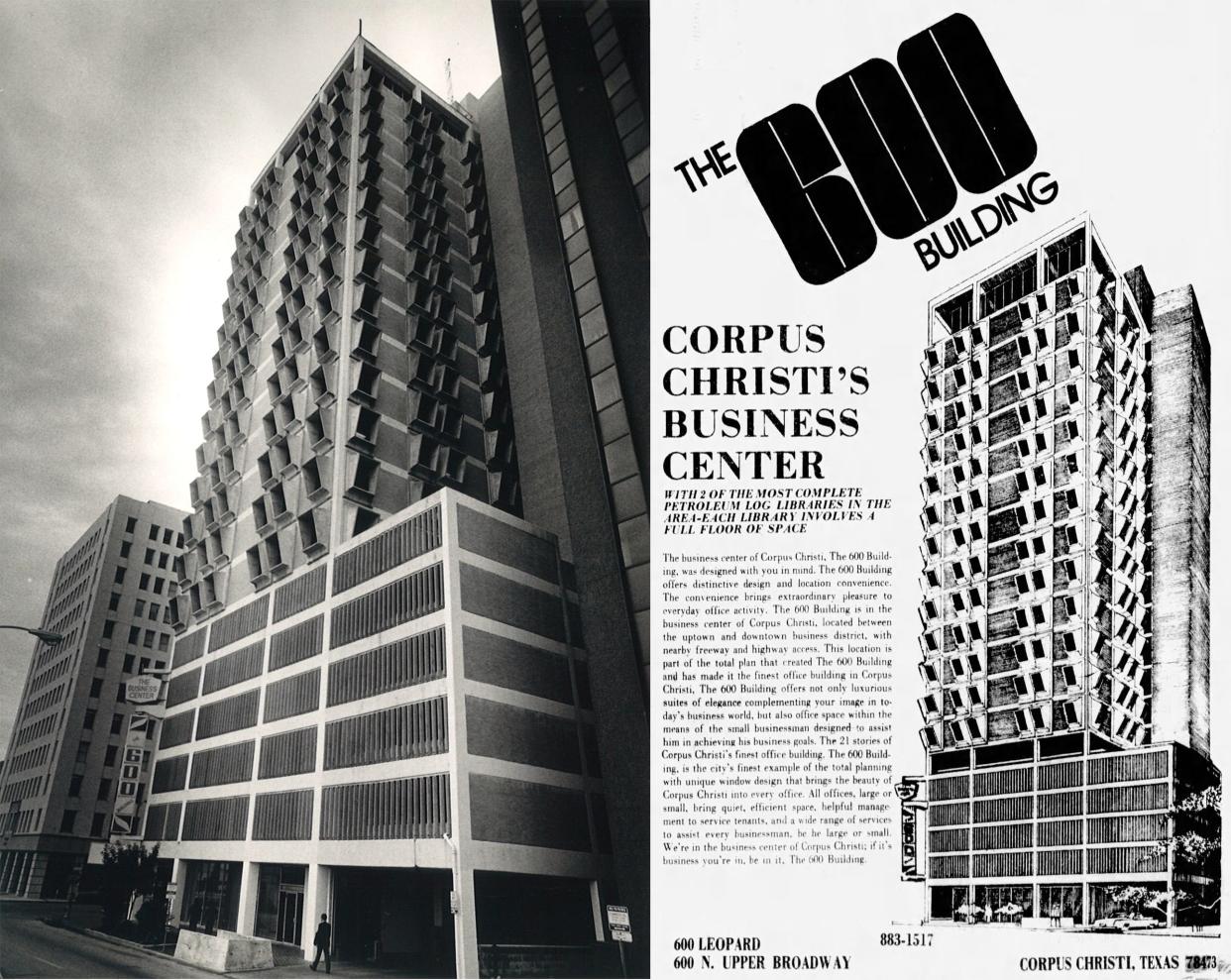#TBT: 600 Building has towered over uptown Corpus Christi for 60 years

The 600 Building, perched on the bluff in uptown Corpus Christi, has distinguished itself in the city skyline for 60 years, standing out from its towering neighbors with concrete sunshades surrounding every window.
In June 1962, the T.J. Bettes Co. announced plans for a new 21-story office building on the bluff in uptown.
The location was previously the spot of the Plaza Hotel, a 14-story hotel built by Robert Driscoll which opened in May 1929, and was considered the city’s premier hotel. After Driscoll’s death just two months later, his sister Clara Driscoll inherited the hotel along with his other assets. But the Depression brought hard times and hotel investors who owned 67 percent of the enterprise voted to sell to San Antonio hotelier Jack White, against Clara Driscoll’s wishes.
White renamed the hotel the White Plaza Hotel. In retaliation, Clara Driscoll built the 18-story Driscoll Hotel next door, keeping a penthouse for herself on the top floor, supposedly so she could look down on the White Plaza Hotel. There's also an unconfirmed story that she said it was so she could spit on the White Plaza, except she used a ruder term than "spit."
More: #TBT: Corpus Christi's barge dock site of city happenings since 1940
The White Plaza Hotel was eventually torn down in May 1962, and a week later T.J. Bettes Co. made their plans for the space known.
Everett L. Cool, president of the Upper 600 Building Corp. owned by T.J. Bettes Co., conducted detailed studies of the area before deciding what type of building to bring to the spot. The hotel had only 30 percent occupancy the year before it was razed. Residences and hotel space were played out in the area, and business – especially the oil and gas industry – was booming uptown. So the idea for office space was selected.
Construction began in July and tenants began moving in September 1963. The 21-story building's cost was about $3.5 million to build, and it was designed by architect firm Jenkins and Hoff. The exterior consists of sandblasted exposed concrete frames and light umber brick.
But the most distinguishing feature, still in place today, was the precast concrete window awnings. Jutting out from the top of the windows nearly three feet, the frames were designed to block direct sun, reducing the building’s air conditioning costs but still allowing an unobstructed view of the city. A Caller-Times reporter described the look as "the scales of some prehistoric creature or a gigantic honeycomb."
The building joined other new office buildings on the bluff including the Petroleum Tower and Vaughn Bank Plaza. The name seemed to seesaw between the 600 building and the 600 Broadway Building (even though the address was technically 600 Leopard Street), but 600 Building eventually won out by the end of the 1960s.
More: #TBT: Huey helicopter, F-9 Cougar jet were Corpus Christi bayfront landmarks for years
A 1973 Caller-Times article about the building gave an interesting peek into it, visiting the tenants all the way from the ground floor – an office supply store, savings and loan and a men’s clothing store – to the upper law offices. In between were lots of geologists’ offices. They banded together and created small communal libraries of oil and gas reports for use. Other offices included the radio station KZFM, which also had its transmitter on top of the building, a carwash chain’s offices, an office for patent applications and the Institute of Applied Psycho-Cybernetics.
As the oil and gas industry began shrinking, offices began moving out of the uptown area, and by the 2010s the building had few permanent tenants.
In November 2018, Wiznia Architecture and Development purchased the building and is currently redeveloping it into apartments, tapping into the trend of downtown residential living.
Allison Ehrlich writes about things to do in South Texas and has a weekly Throwback Thursday column on local history.
This article originally appeared on Corpus Christi Caller Times: #TBT: 600 Building an uptown Corpus Christi landmark since 1963

